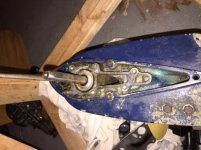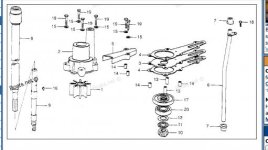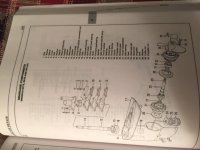Flyinbrian87
New member
Hello! First post here and was wondering if you guys could help.
I have a 1982 Honda bf75L engine that will not pump water. I've replaced the pump once only to ruin it again. I believe this is due to the crumby corroded "seal" it was rotating over. Id like to remove the seal and the bearing underneath it and replace with the new parts so that my pump has something clean to sit on. Is it even possible to pull the bearing in this case without taking the prop off? Or should I just pry the seal, relube the bearing (hoping it's not damaged too bad), then lay a new seal over it?
This is is the only problem I see the motor having as it does run nicely. I unclogged every single hole, hose, port, pee hole I could find. I am in the process of replacing the thermostat, and was thinking of replacing that seal (rather than just clean it as the rubber is shot around the drive shaft). I'll attach a pic of the drive.
Any other ideas as to why my impellers are being bent up?

ALSO, I'll upload the schematic of the parts. Any idea which way is the correct positioning? Honda clymer manual says bearing on top. And the schematic from boats.net shows bearing on bottom. I'm leaning towards seal on top, bearing underneath.


Thanks so much.
I have a 1982 Honda bf75L engine that will not pump water. I've replaced the pump once only to ruin it again. I believe this is due to the crumby corroded "seal" it was rotating over. Id like to remove the seal and the bearing underneath it and replace with the new parts so that my pump has something clean to sit on. Is it even possible to pull the bearing in this case without taking the prop off? Or should I just pry the seal, relube the bearing (hoping it's not damaged too bad), then lay a new seal over it?
This is is the only problem I see the motor having as it does run nicely. I unclogged every single hole, hose, port, pee hole I could find. I am in the process of replacing the thermostat, and was thinking of replacing that seal (rather than just clean it as the rubber is shot around the drive shaft). I'll attach a pic of the drive.
Any other ideas as to why my impellers are being bent up?

ALSO, I'll upload the schematic of the parts. Any idea which way is the correct positioning? Honda clymer manual says bearing on top. And the schematic from boats.net shows bearing on bottom. I'm leaning towards seal on top, bearing underneath.


Thanks so much.

